The Hope Diamond is Missing: Curious Artifacts in the Gillespie
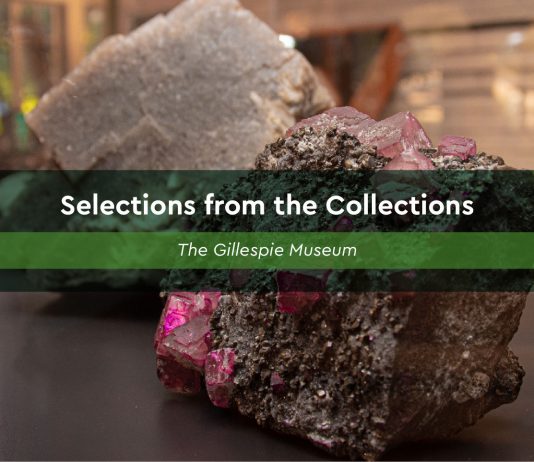
I have my eye on a hand-painted Karst Caves and Water Action model from the Ward’s Science Catalogue — a thing of beauty and usefulness. Browsing for the newest teaching tools has me thinking about surprising treasures in the museum.
There are always artifacts in a natural science museum with as much resonance as any specimens in the collection. Of course, there are documents, photographs and mementos representing a museum’s past: the 12 volumes of collection notebooks in Nellie Parsons Gillespie’s hand (the first data management system for its founding 15,000 minerals); the first museum sign, from 1958, when the Gillespie was in the center of campus; a coquina brick collected from the construction site of the Rinker Environmental Learning Center, which opened in 2009; the party favors for the fiftieth, the golden anniversary celebration — pyrite, which you may remember from fourth-grade earth science studies, is also known as fool’s gold.
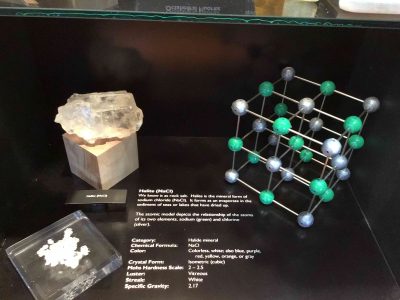
In the Gillespie Museum, collectibles are often connected to our teaching mission. Some of them are relatively new — such as molecular lattice models of halite, graphite, and diamond — purchased in 2015 for the museum’s It’s Elemental display. Those are already collectors’ items, no longer available from Fischer Scientific.
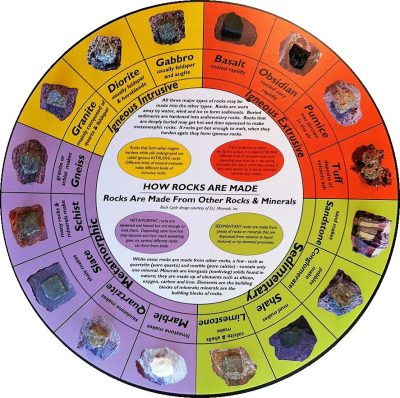
Others have been created in-museum. The much-spun Rock Cycle table borrows a design from one of our vendors of small specimens for the mineral laboratory, a fundamental experience for K-5 field trips. DJ Minerals of Butte, Montana, has been supplying rocks, minerals, fossils and affordable field equipment for decades. We especially liked their version of the cycle, and adapted it to our Connections Room. Rocks, like young scientists, are dynamic.
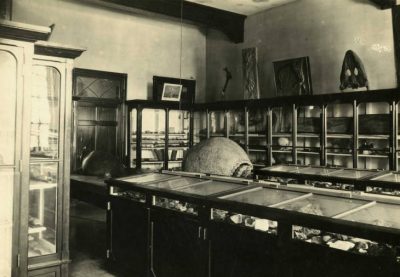
There is an intriguing set of vintage, hand-planed models representing six of the seven crystal systems, old enough to have been legacies of the Monroe Heath Natural History Museum, once housed in Elizabeth Hall. They’ve been heavily used — desirable for teaching models — so there are no existing labels or identifying marks for establishing their provenance. But many of the mineral specimens from Monroe Heath made their way to the Gillespie Collection; these may well have come with them. We keep the older versions in our display cases, but have newer, more colorful crystal forms for those who might want to get theirs hands on Platonic Polyhedrons.
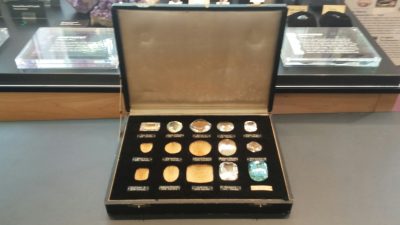
Among the most interesting and valuable of our teaching models is a set of Historical Diamond replicas, likely handed down by Mrs. Gillespie, whose father was a jeweler in Palatka, Florida, in the late nineteenth century. As you can learn from a 2011 Antiques Road Show appraisal, these glass sets were used by jewelers to educate clients about various diamond cuts or occasionally offered as novelty items in the museum shops where historical diamonds were displayed.
The Gillespie’s set was created in the Idar-Oberstein, Germany, a center for gemstone cutting. It includes fourteen of the originals. (The Sancy, Florentine, Grand Mogul, Cullinan II, Kohinoor and Jubilee are currently on display in our Storied Stone exhibit.) Alas, #15, the Hope Diamond, has been replaced by a very nice replica of Southern Star (found in Brazil in 1853). In 2011, Roadshow appraised a complete set at $6000-$12,000. Ours is, of course, beyond measure.
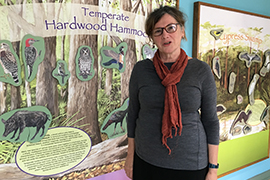
If you’d like to create your own crystal teaching models, check out our Cut-and-fold Crystal Models from the museum’s Educational Resources page.
-Karen Cole
Director, Gillespie Museum



